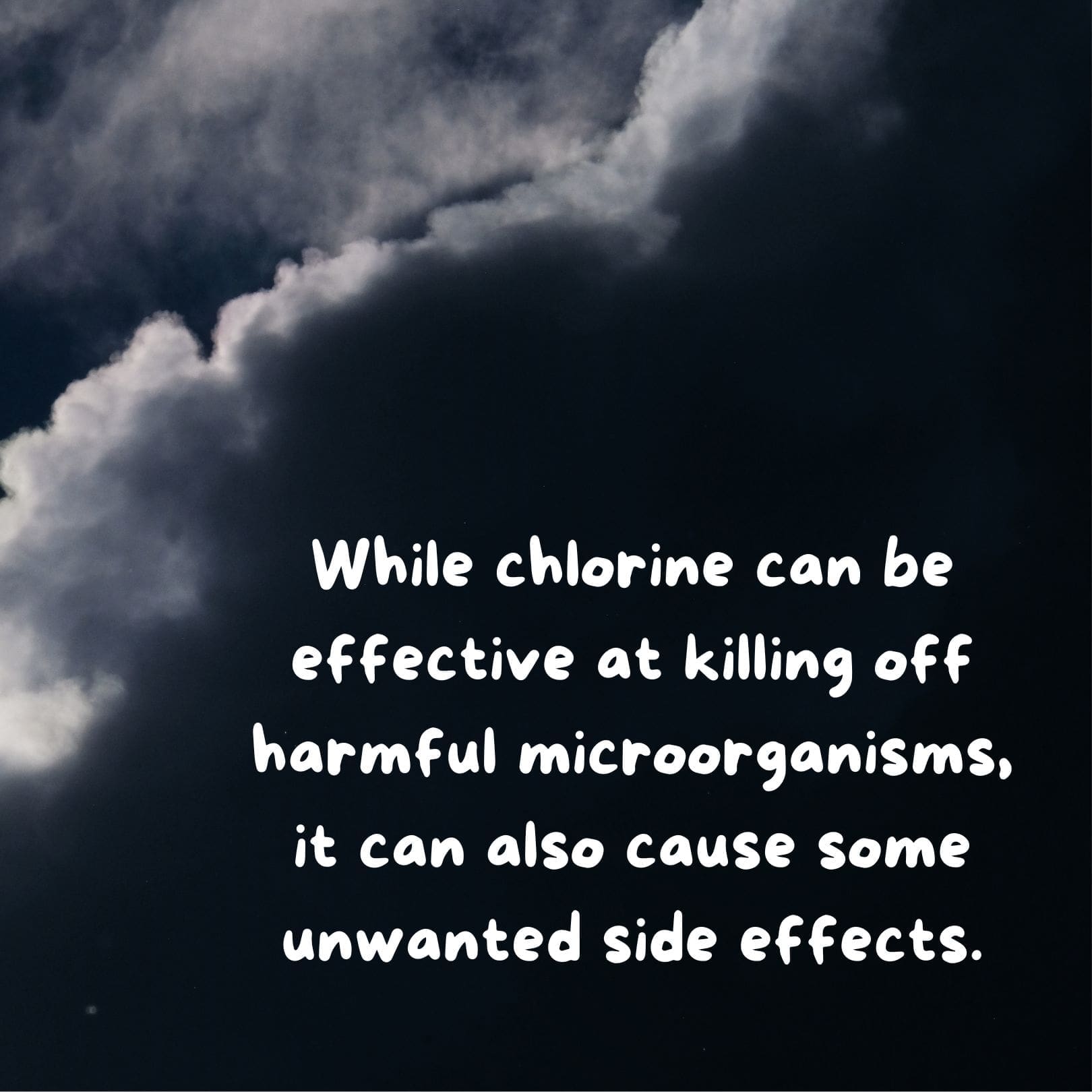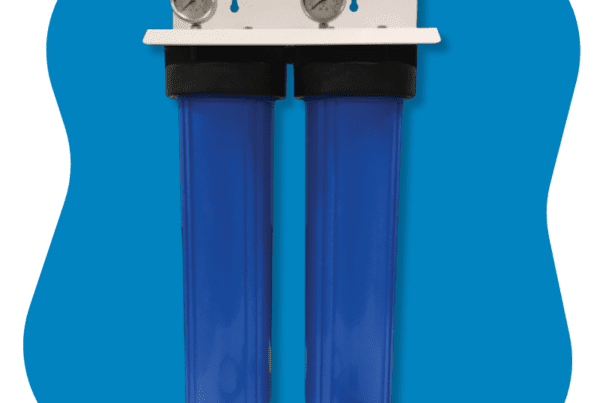You’re taking a sip of water when you notice it seems less clear than it should. You immediately wonder, “What causes poor water clarity?” It’s worth noting that drinking clarity is highly dependent on light transmission. And the amount of light that passes through the water will be reduced by naturally occurring materials (like minerals, salts, and even dead plants) and incidental pollutants like silt and particulates. Not only do these things reduce transparency, but they can also contribute to taste, odor, and overall drinking quality.
Plants and animals often can’t survive in water that’s murky or otherwise poor in quality. It’s not just a matter of aesthetics—cloudy or otherwise poor-quality water can be a major cause of illness, especially in developing countries where disease spreads quickly. There are many causes of this type of pollution—here are some of the most common ones and our recommended solutions for them.
Turbidity
Turbidity is the cloudiness or haziness of water caused by small particles that are suspended in it. Turbidity can be caused by soil, clay, and silt, which can get stirred up as storm runoff flows over land into lakes or rivers. The turbidity depends on how much sediment is in the water (the more deposits there are, the greater its effect on clarity).
Turbidity can be measured in NTU (nephelometric turbidity units). A reading below 1 NTU indicates clear water; between 1-5 means slightly cloudy; between 5-10 shows moderately cloudy; anything above 10 falls under “turbid.”
Total Dissolved Solids (TDS)
Total dissolved solids (TDS), or total suspended solids (TSS), are measured in milligrams per liter. This number indicates how much material is dissolved in water. It’s calculated using a TDS meter and can be expressed as ppm or mg/L.
TDS can be caused by minerals like calcium and magnesium, salts like sodium chloride (table salt), metals like copper or lead, organic matter such as leaves and twigs–or combinations of these things!
Sediment
Sediment is the particles that settle in water. It can be caused by erosion, runoff, and erosion. Erosion is the wearing away of soil by wind or water; this is why sediment often appears brownish in your home’s water clarity test results.
Excessive Iron
Iron causes water to look cloudy and can stain laundry dishes. It can also be found in some wells that use iron pipes and water sources. Iron is often present at high levels during spring runoff when soil erosion occurs, and iron can leach into your well from nearby farms or construction sites.
If you notice that your water has an orange-brown color or rusty stains on your laundry, it may be due to excessive iron content. If this happens regularly, consider having your well tested for total dissolved solids (TDS), which will tell you how much total dissolved solids are present in your well water sample—including iron content—and if any other minerals need special treatment before they reach your tap.
Tannins
Tannins are a group of phenolic compounds found in plants, animals, and microorganisms. Tannins occur naturally in water due to decaying matter, such as leaves and branches entering the water supply. Tannins are not dangerous to human health, but they can cause a bad taste and odor in drinking water. Some people may also experience skin irritation when they come into contact with tannins in drinking water. They can also have an astringent taste and often cause a dry or puckering feeling in the mouth.
Tannins are found in some of our most common foods, such as tea and red wine. Red wine contains tannic acids from the skins of grapes used to make it. Tannins may also be present in fruits like peaches and raspberries and nuts like walnuts, hazelnuts, and chestnuts.
Tannins are found naturally in water sources throughout the world. They can be removed with activated carbon filtration systems, which use granular carbon material to remove organic impurities from water during treatment processes at water treatment plants or private wells.
Chlorine
 Chlorine is a chemical that kills bacteria and other organisms in your water. It’s added to municipal water supplies, pools, and spas. While chlorine can be effective at killing off harmful microorganisms, it can also cause some unwanted side effects:
Chlorine is a chemical that kills bacteria and other organisms in your water. It’s added to municipal water supplies, pools, and spas. While chlorine can be effective at killing off harmful microorganisms, it can also cause some unwanted side effects:
- Dry skin and hair — the drying effects of chlorine are due to its ability to break down oils in your body that help keep you hydrated. Chlorine can make you more susceptible to rashes or other skin irritations.
- Red, itchy eyes — Chlorine reacts with proteins found in our tears and sweat secretions from our glands around our eyes when we swim or bathe in chlorinated water—this reaction causes irritation which leads us to red eyes after swimming/bathing for extended periods. You’ll want to avoid direct contact with these areas until they’ve had enough time to heal naturally over several days after exposure.
Reverse Osmosis Improves Your Water Quality & Clarity
The process of reverse osmosis involves forcing water through semi-permeable membranes under pressure. The contaminants are left behind, while clean water passes through the membrane and into your home.
This method is often used in commercial settings where large volumes of water must be filtered quickly and efficiently, and it’s also used in residential settings.
The reverse osmosis process is quite simple, and water is forced through semi-permeable membranes with tiny holes in them. These membranes are similar to those found in blood vessels, kidneys, and red blood cells.
Investing in a water softener is the best way to deal with poor water clarity.
Water softeners are the best way to deal with poor water clarity. If you need help getting your clothes clean, or if your dishes are coming out of the dishwasher with spots on them, then it’s likely that your water is causing these problems.
The first step when choosing which type of system is right for your needs is determining whether or not there are any restrictions on where it can be installed by city regulations—and then making sure that whatever space has been chosen meets those requirements. This can include anything from size restrictions based on square footage to whether there are any electrical outlets nearby where power could be plugged into without running extension cords everywhere else around town so that people don’t trip over them every day while walking through their living room doorway.
To ensure that your water is clear and free of contaminants, it’s important to know what causes poor water clarity. Many factors, including sediment, iron, and chlorine, can contribute to this issue. If you notice that your water isn’t clear enough for drinking or cooking purposes, consider investing in a reverse osmosis system and a water softener to remove these harmful particles from your supply. If you are concerned about your home’s water quality and clarity, contact C and J Water today!




